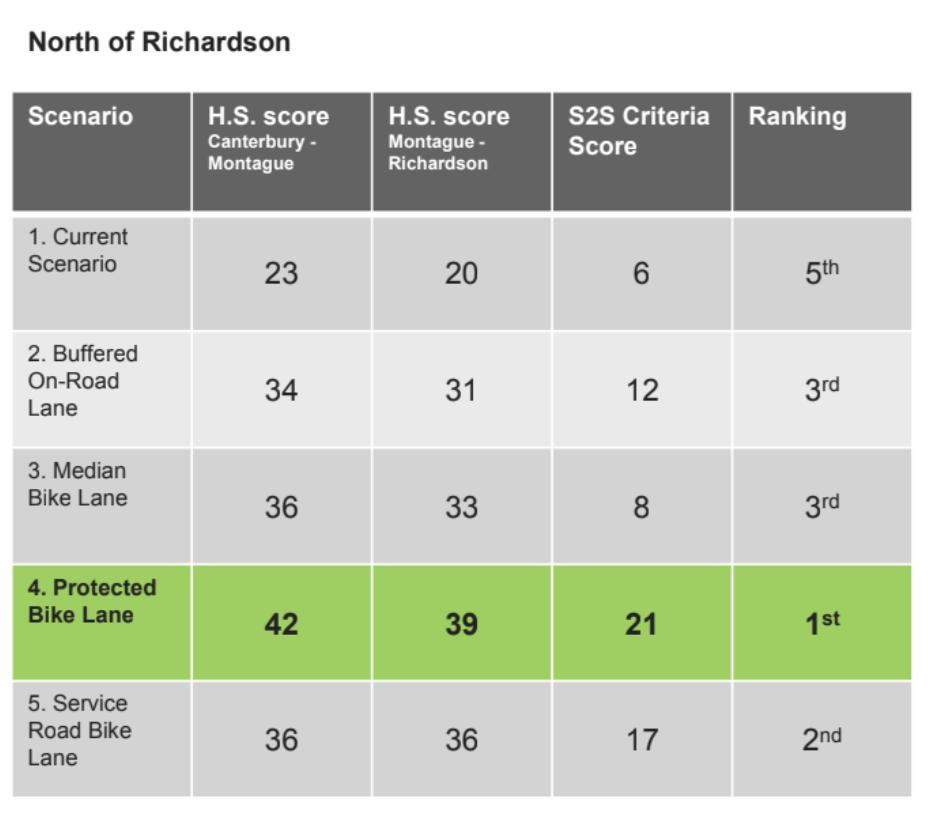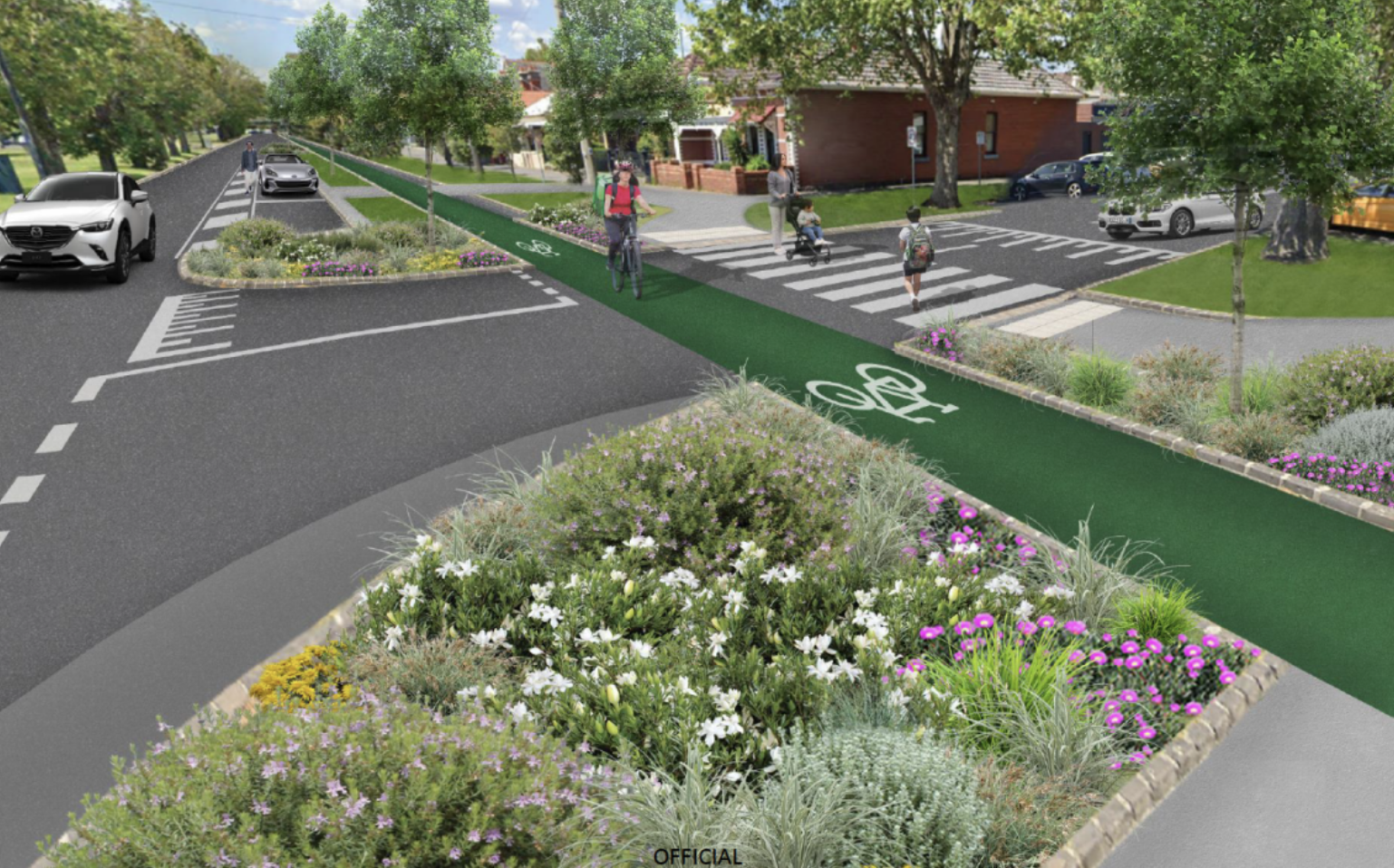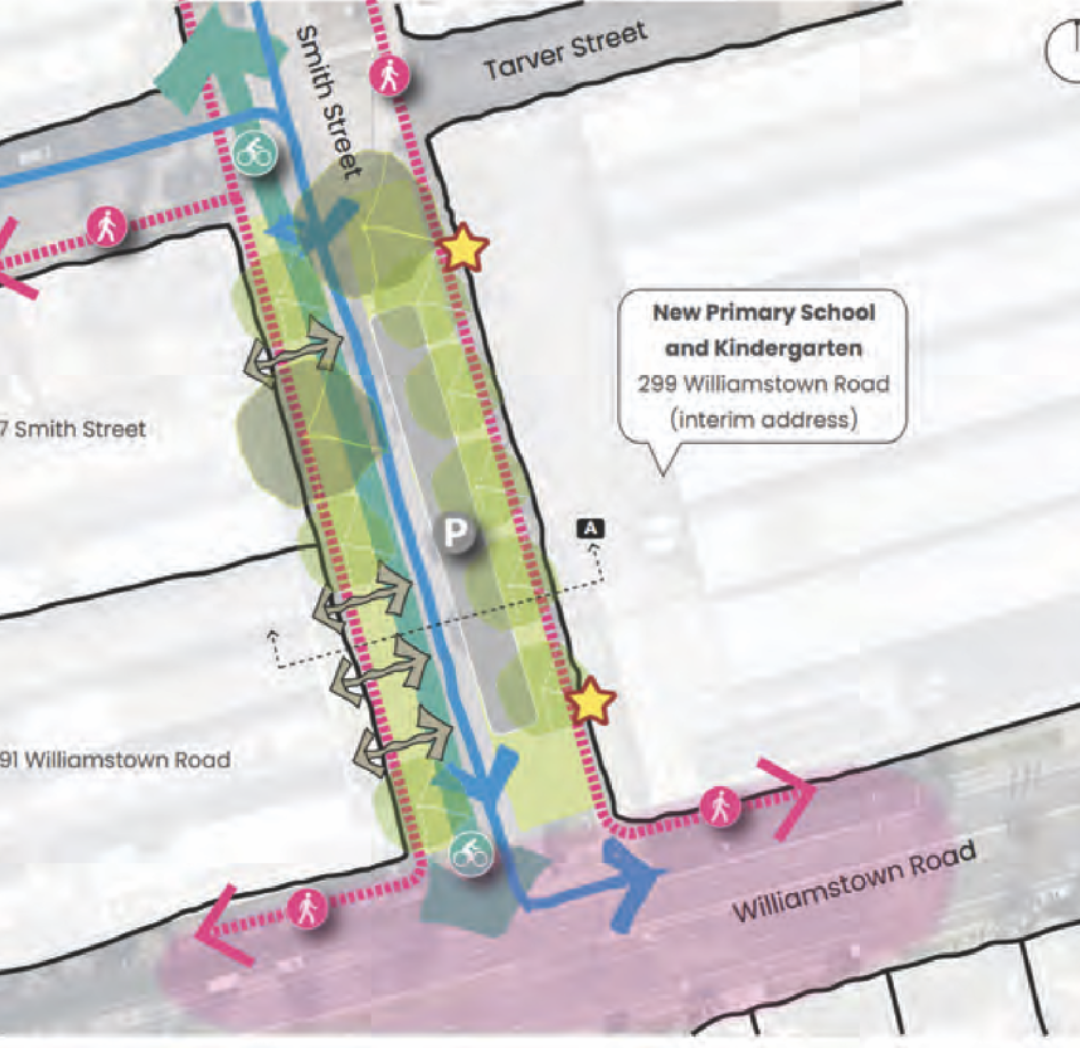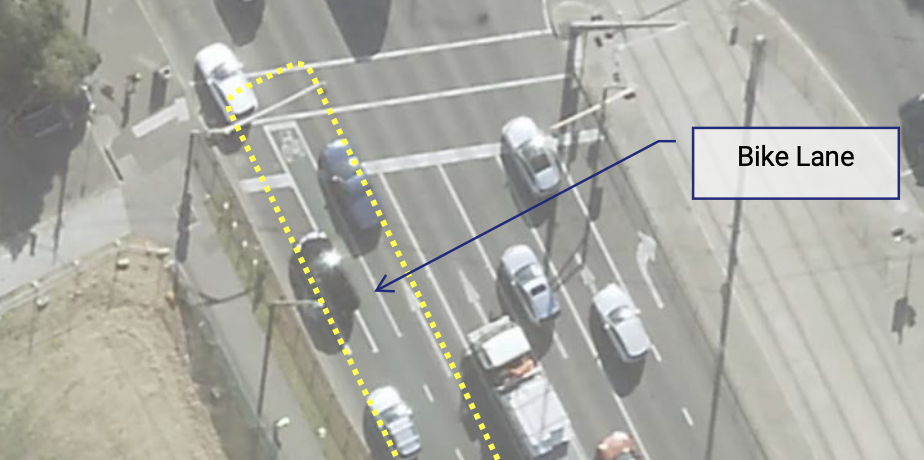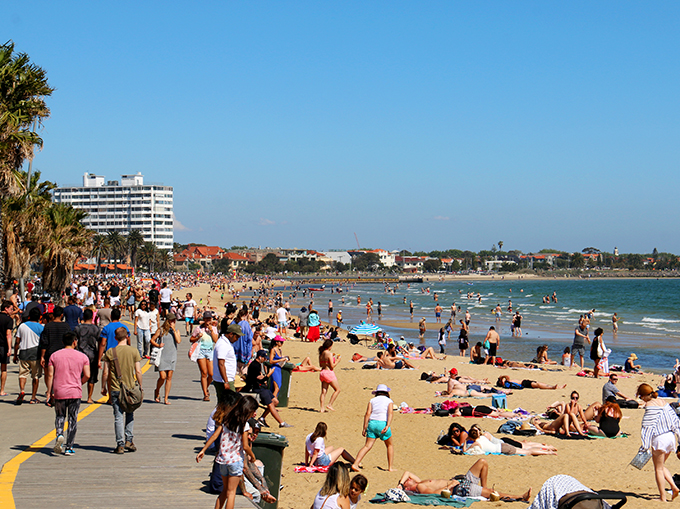The Victorian state government is introducing new regulations to ban e-bikes, and other e-devices such as electric scooters and skateboards, on public transport.
Our current campaign page is here, with links to resources. We encourage everyone who will be affected to make a submission, and to call their local MPs. Submissions close 18 August.
The following is our draft submission, to discuss at our August meeting.
Our submission to the consultation
About us: The Port Phillip Bicycle User Group (PP BUG) is a member-based group supporting cycling in our local community. Our goal is for cycling to be an attractive option for 8 to 80+ year olds— whether for fun, fitness or transport. We have social rides for people using regular bikes or e-bikes, and often include a public transport component. The proposed ban would exclude e-bike users from some of our activities.
Why a broad ban on all e-bikes on Victoria’s Public Transport system will have a negative outcome for Victoria. And why there are better ways to reduce the risk of another runaway combustion of an e-Bike battery onboard.
We begin by noting that the impact statement only deals with the possibility of fires. The actual risk is not quantified. The impact statement does not deal with clear adverse impacts of the proposed legislation. Our submission will address this gap.
Firstly, look at the various categories of e-Bike users that a broad ban will affect.
This ban will impact commuters. Many users of Victoria’s public transport system utilise e-Bikes for the ‘last mile’ part of their journey (from station to home, or station to work). Often in a hurry, and often a lot further than a ‘mile’, an e-Bike is a very practical solution.
But an expensive e-Bike is not something that you want to leave locked at a station, or even at the haphazard secure bike parking (if available). So users take their e-Bike with them on the train, especially if they use it at both ends of their journey. And often, without this option, using public transport is no longer feasible, so it will be back to contributing to traffic congestion for these Victorians.
This ban will impact recreational and touring bike riders who use trains to get to trails around Melbourne and regional Victoria. Victoria’s recently capped fare regime has seen an increase in V-line patronage, and the bicycle bays of Vline trains are often full these days.
Cross-country e-Bikes have become very popular, enabling riders to take on hilly routes and windy conditions with ease. e-MTBs are all now very popular for riders to utilise on the increasing number of MTB parks established around regional Victoria. All of which has resulted in increased tourism (and revenue). But not everyone wants, needs or can drive there when Victoria’s transport system provides an excellent alternative.
This ban will affect food delivery riders (and their customers). Many food delivery riders live far from the suburbs that they work in. They need to take their e-Bikes on a train to get there. By banning all e-bikes, there is no incentive for riders to upgrade their bikes to a compliant model— indeed, if one needs to travel 20km before and after a shift, the more powerful (and currently illegal) models become more attractive.
And it is not just the delivery of food impacted. Train transportation is often utilised by other e-Bike delivery riders, and oftentimes Australia Post staff. This ban will result in the reduction of a lot of the convenient services that Victorians have come to rely on, especially since the boom in Work-from-Home arrangements.
This ban will affect parents who have taken up the e-cargo bike acquisition programs offered by a number of Melbourne’s councils. An e-cargo bike is a wonderful way for parents to take their kids to school and reduce school drop off congestion. But many parents have kids at schools that are a distance away, or there is an obstacle or hazard between home and school. So they take the train a few stops.
This ban will affect seniors and people for whom owning or renting an e-Bike has made an active lifestyle possible. They can still use their e-Bikes locally, but often these Victorians engage in activities with friends or groups like U3A for seniors, who do excursions utilising the train: connecting, staying active, building community.
This ban will unfairly affect people who do not own a car. Many people have chosen to give up on car ownership - due to economic circumstance - or simply by making logical and environmental decisions. There is also increasing pressure on older drivers to surrender their licenses due to decline of ability.
Victorians’ decisions to get off the road are based on alternative transport services available to them in the area that they have invested to live. And this often includes access to an e-micromobility vehicle.
To arbitrarily remove public transport services from these Victorians is unfair, and does not support sustainable lifestyle choices in our rapidly growing city.
Department of Transport and Planning have posited that they are basing these proposed changes on incidents and regulation examples in other jurisdictions. But what happened, and how different was the response there to what is proposed here?
Three serious incidents occurred involving the combustion of e-Scooter batteries on the London Underground in November 2021, the Madrid Underground and a Barcelona local train, both in November 2022.
As a result, a number of European transit authorities have since banned e-Scooters from carriage on public transport systems, including Hamburg (August 2023), Düsseldorf (March 2024), Munich (April 2024), Berlin (May 2024), Barcelona and all of Ireland (both October 2024).
Each of these jurisdictions have cited the London/Madrid/Barcelona eScooter incidents of 2021-22, and all have specifically excluded e-Bikes and Mobility scooters from these bans.
In New York, it is only the Port Authority Trans-Hudson trains to New Jersey that have banned e-Bikes. New York City, with its huge MTA Subway and Commuter Train network, chose instead to implement regulations focused on restricting uncertified lithium-ion batteries.
As of 31 March 2025, Transport for London has banned e-Scooters, but also included a ban on all non-folding e-Bikes from their transport system.
Mayor of London, Sadiq Khan, made it clear that the exclusion of folding e-Bikes from this ban is because TfL believe that it is not possible to customise or convert folding Bikes using the imported kits responsible for the “small number of e-Bike incidents” that have occurred on their system.
Evidently London’s ban is about their authorities’ perceived inability to discern converted e-Bikes from the safer, commercial and compliant variety.
Like the proposed Victorian ban, this is an issue with policing methodology that has resulted in punishing law abiding citizens.
It is important to recognise the criticality of a fire on a major metropolitan transport system. But whilst London have been dealing with a number of fires caused by non-compliant e-Bikes on their system, Victoria has had one reported incident.
There have been far more reported incidents on Victorian Public Transport of combusting batteries in mobile phones and charging packs than those involving e-Bikes. And yet these other risks are not being banned.
That one local e-Bike incident was a customised eBike that caught fire on board a Belgrave bound train at the above ground Union Station on March 15, 2025. The bike itself was a Fluid MTB converted with an imported hub drive motor and accompanying battery pack attached to the frame. It is apparent that the e-Bike conversion kit is to blame.
These conversion kits - that can easily be ordered online - often include motors with a power rating that makes them illegal to use as an e-Bike in Victoria. Often these kits include a throttle which renders them no longer a ‘pedelec’ (or pedal initiated drive). The control systems can also be easily overridden to remove speed limiting. Sometimes these kits or completed bikes are purchased from a different state with different regulations.
The batteries that come with them are often unbranded; have rudimentary battery controllers without conditioning modes; and they do not comply with Australian standards. These batteries often fail because of the haphazard welding connecting the internal lithium ion battery components. They can fail when being charged without an appropriate control mechanism, or even when they receive a prior blow that breaks and shorts one of the internal welds.
Whilst the illegal motors are a danger on roads and trails, causing deaths and injuries that have been the subject of Victorian Coroners inquests, it is the batteries that are the cause of any runaway combustion on our transport systems and elsewhere. And it is the batteries that are what needs to be central to this particular regulatory process.
One such inquest by Victorian Coroner Audrey Jamieson, on 18 July 2025 reported a finding on the death of one e-Bike rider following a collision with another. Her honour identifies the issues around authorities identifying which bikes are non-compliant, and recommends that Victoria Police gain methods for better detection.
The Coroner opens the door to a 'radical' blanket e-Bike registration regime, but only as a ‘possible outcome’ from her honour's proposed intra-governmental conference on illegal e-Bike detection. And despite some errant reporting around the findings, her honour does not make e-Bike registration a clear and formal recommendation.
As a suggested alternative to a broad ban, Victoria could restrict only non-commercial (or kit) e-bikes from public transport. This could be achievable by allowing only e-bikes with batteries manufactured by a list of prescribed makers, batteries certified to meet Australian standards (UL 2271), aboard trains.
New York City’s response is along the same line: targeting the actual cause of a problem, but at the point of sale.
Whilst Victoria is not responsible for importation controls, it is responsible for consumer protection at the point of sale. Deflecting to the Federal Government, or blaming differing state laws, is not a responsible course of action.
Both NSW and Victoria have called on the Federal Government to restrict importation of the dangerous e-Bike kits and uncertified batteries.
New South Wales are not waiting for the Federal Government, or unified national regulations. Despite the NSW State Government currently considering a “temporary” e-Bike ban on public transport, unlike Victoria, they have already commenced statutory processes to regulate the cause.
As of February 2026, NSW’s Department of Fair Trading requires that all e-Bikes and their lithium-ion batteries are tested, certified and marked prior to sale in that state, with penalties of up to $825,000. These devices are now ‘declared electrical articles’ under the NSW Gas and Electricity (Consumer Safety) Act 2017.
The enforcement of this reclassification was pushed back from August 2025 whilst working with the local industry to ensure that compliance and testing methods are achievable. NSW Transport Minister John Graham has stated that any train ban would be temporary until these sales restrictions are in place and working.
Victoria does not really need to reinvent the wheel to find a working model. Restriction and certification at point-of-sale isn’t a catchall solution, but it does give Police the ability to clearly identify illegal e-Bikes and batteries - exactly what the Victorian Coroner and others have called for.
If a product certification process and its enforcement is too hard for the Victorian Government, another simple - even temporary - alternative is requiring e-bikes to have their battery removed when carried on public transport.
In this scenario, if something does occur, it is a lot easier to remove a battery from a train, than an aflame e-Bike. There could also be the additional safety option to seal the battery in a sturdy, airtight bag - removing oxygen from any potential fire equation.
There are other alternatives that could be explored that do not involve the blunt instrument of a broad ban.
Whilst the Victorian Department of Transport and Planning are content to bolster the cause for a ban by looking at incidents in other jurisdictions, they have limited their outlook for examples of constructive solutions.
Look to Europe to see examples of restraint in what is banned. And other jurisdictions such as New York City for positive ways to target the actual problem.
This is not just an opportunity to take action on the issues associated with some e-Bikes on trains. This could be the impetus for a solution to the same issues that can and do occur anywhere across the Victorian community.






